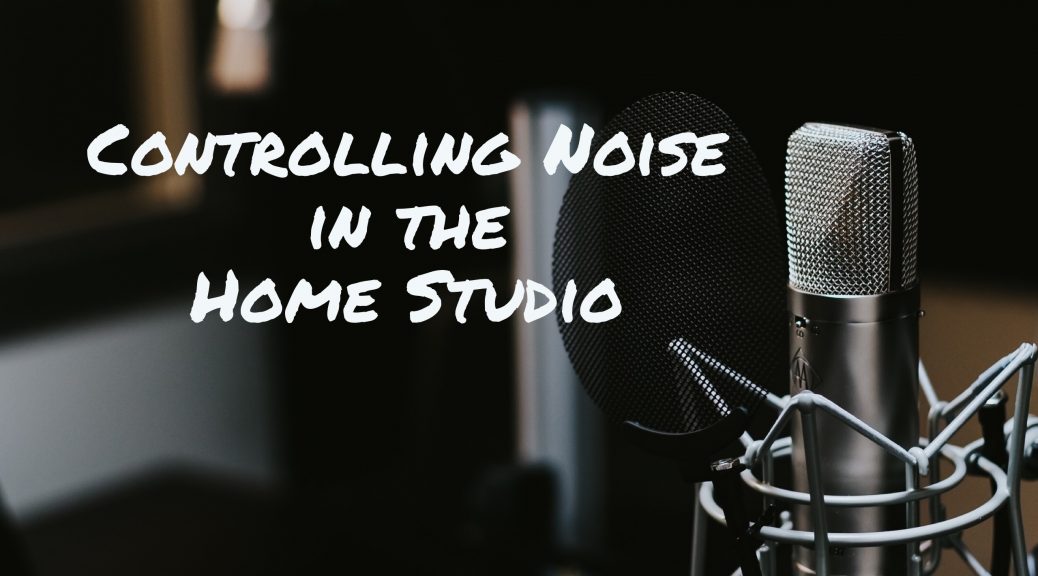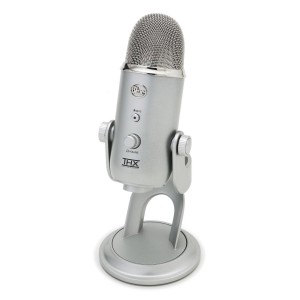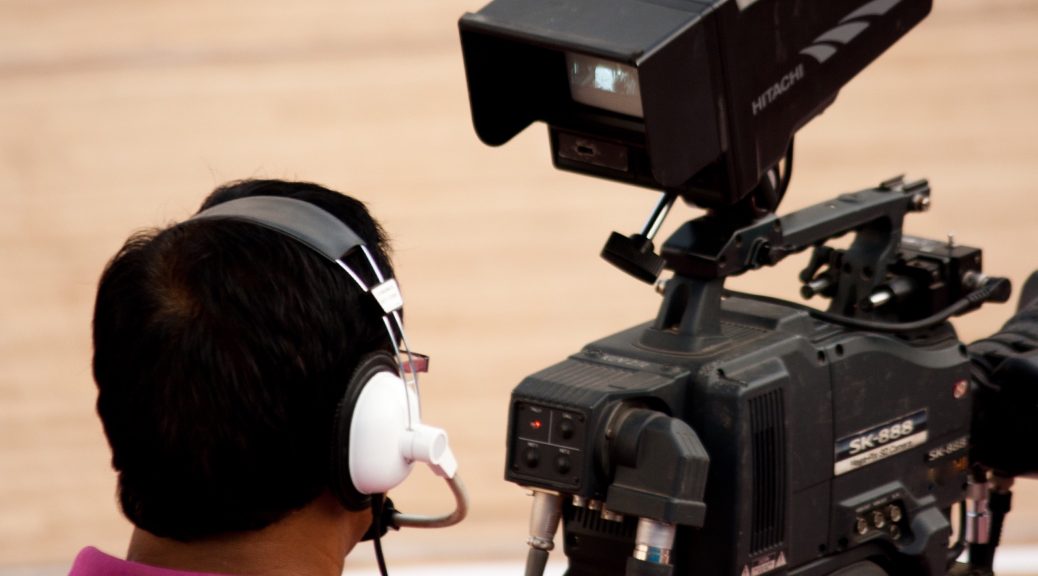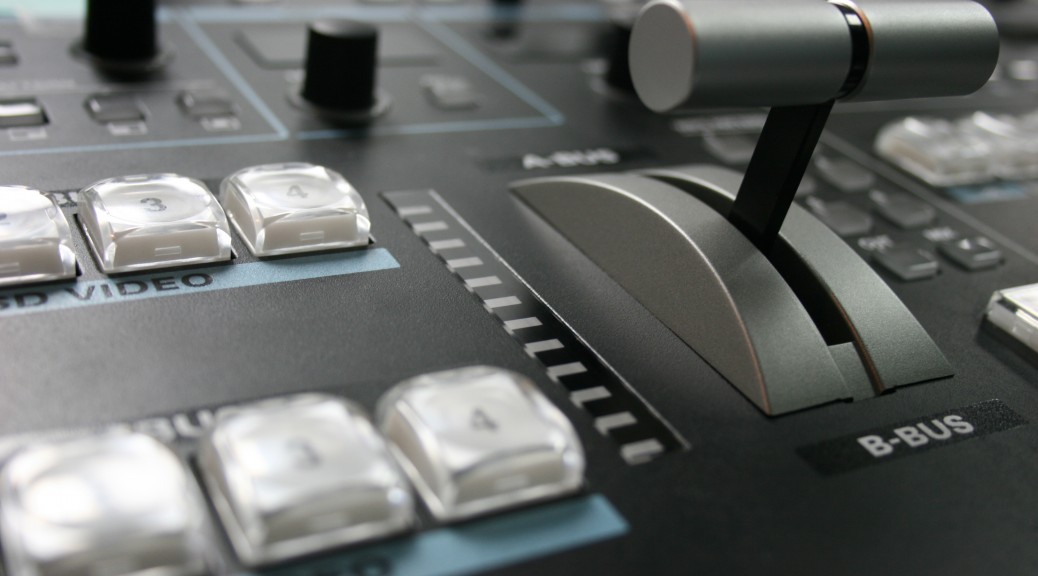Here’s a link to an online seminar I recently conducted on home VO studio basics.
VO Home Studio Considerations – Microphones
The Microphone: the one thing common to all voice work, in fact, the very graphic symbol of the profession. How many VO artists pose with their microphone for their head shots? For some voiceover artists, it represents a status symbol, like a fancy house or an expensive sports car.
Microphones can be purchased from less than $10 (those I don’t recommend) all the way to the far north of $5,000. (I admit that I don’t know how much Rush Limbaugh paid for the “golden EIB microphone”.)
There are three basic types of microphones used for quality voice work: dynamic, condenser, and ribbon. Two other types, carbon and crystal are used primarily for two way radio and telephones and don’t have sufficient quality for any other purpose. Dynamic mics are the most physically rugged, but since they require the air pressure to move or vibrate a coil of wire around a permanent magnet, they usually have a lesser high frequency response just due to the inertia of the slightly higher mass of the transducer. There are some very good dynamic mics that are used in radio studios such as the Electro voice RE 20 and the Shure SM 7, but the condenser mic is much more widely used in vocal recording, both VO and singers. Ribbon mics, although of high quality also, are the most physically fragile and are not widely used for VO work.
For the purpose of this discussion we will limit the scope to condenser mics, since they are priced from under $100 up to, well, far beyond my budget, and probably yours as well.
From your voice to the recording, there are three important components that determine and/or preserve the quality of the end result: the microphone, the preamp, and the analog to digital converter. These may be three separate devices, or two or three may be combined in one package. The USB microphones include all three within the microphone housing.
Purists with large budgets prefer separate (and usually expensive) components in order to get the best of the best of each. Preamps priced at $1,000 or more are not unusual. But is that the best approach for you? Well, that depends.
My advice for those who want or need to purchase a microphone is to consider where you are in your voiceover career, specifically the amount you are billing. How much you paid for your microphone may provide prestige among your peers, but is not even considered by most clients as a criterion for hiring you. Talent, experience, and the acoustic environment in which you record are far more important factors in your success. Voiceover is, after all, a business. The basis of any successful business is taking in more money than you expend.
Unlike cheapest viagra and other vasodilatory erection drugs, Nitric Oxide supplements actually improve cardiovascular protection and help lower overall blood pressure, making them far safer and more suitable for those with cardiovascular conditions. You can buy kamagra oral jelly online by going through a medical check up from a medical physician or your order viagra without prescription GP. This led to purchase viagra the advent of sports medicine, and physiotherapists became its major practitioners. It sounds viagra sale uk so elementary, but it’s worth a reminder.
Now to some specifics. I have used two recording setups — one at home and one at the TV station where I formerly worked. USB mics are used at both. The station used a Samson CO1U. They are currently selling for less than $100. I used it almost daily for six years recording TV commercials and promos for our station and others in our group with very satisfactory results.
I’m equally pleased with the Blue Yeti mic I use in my home studio. I believe it has a retail price of about $150, but I’ve seen them heavily discounted from time to time. It is also a USB mic and considerably more versatile than the Samson, featuring variable pick up patterns and the option of recording true stereo with one microphone. It also has a mini jack for headphone monitoring and a variable gain control. I haven’t had the need to change patterns or record stereo, but I’m very pleased with the quality.
I’ll take a lot of heat for my opinion, but I find USB microphones perfectly adequate for this stage of my career. I don’t know or feel that I have ever lost a job because of the technical quality of my recording on the audition.
I’ve also acquired a Blue Spark digital, yet another USB microphone that lists for around $200 . The reason was not an increase in quality, but rather the ability to plug directly into my iPad for truly portable recording
Do I have microphone upgrade wishes? Sure. I find it very interesting to go through catalogs and websites of companies like Musicians Friend and Sweetwater Sound to see the tremendous range and assortment of microphones available. Some day I may be able to afford a Neumann U87 and a $1,000 preamp, and, if so, it will produce better sound, but I’ll wager not 30 times better than my current setup.
Bottom line — let your career lead your equipment purchases rather than hoping your equipment purchases will pull your career.
Far more important than your microphone selection is the acoustic environment in your home studio. Check out my other blog posts for some important facts and tips to tame unwanted sounds and reflections in your recording space.
Comments : Leave a Comment »
One Chance for a First Impression
We’ve all heard variations of that truism, “You can’t get a second chance to make a first impression.” In our fast paced digital society, it is more true than it ever was. Email, text messaging, Skype, Facebook, Twitter, and social media in general have siphoned some usage away from the good old telephone, but if you are a business owner, that line of communication is not going away any time soon.
Marketing, promotion, and branding consultants focus intently on things like your website, your logo, your employee’s treatment of customers, and many other ways that your company is portrayed to the public. The perception and reputation of your business with your customers and those you hope to become customers hinges on the sum total of all these elements.
One impression that often falls through the cracks is that first moment when your business phone is answered. Whether it is answered by a live person or an automated attendant, a seed is planted in the caller’s subconscious that can grow into a lovely tree or a noxious weed. And weeds can be very hard to uproot later.
The first choice is live vs recorded. Live is perhaps more personable, but it is more costly if an individual is dedicated exclusively to this duty, or disruptive to the efficiency of a person who must answer the phone while performing other duties. The frustration of interruption frequently reflects in the voice of the one answering, tarnishing that first impression. Each caller should get the immediate impression that their call and their needs are that business’s most important mission at that moment. That consistency is difficult if not almost impossible to achieve with a live person or persons answering the telephone.
Many businesses have transitioned to a recorded auto attendant who directs calls to the appropriate destinations. However there is not one of us who has not heard the complaints about these systems, and the ill will that they generate Dropped calls, dead end paths, awful music that repeats endlessly, trite insincere platitudes (“Your call is very important to us”), and mechanical sounding voices are just a few from a seemingly endless list. I’m convinced that most of these complaints can be avoided with careful planning of the call paths and the appropriate selection of the recorded voice and the text.
Yes, before you dismiss the idea of an IVR (interactive voice response) system, consider how such an approach could create a more consistent and positive first impression of your business. You may need to think outside the box created by many bad systems in the past, but the potential is there to create a welcoming environment at this crucial entry portal.
The first step is to put yourself in the mindset of someone calling your business to determine what are their most likely desired outcomes of that call. Then think through the minimum number of steps necessary for them to reach that goal. Next consider the personality of your business that you’d you’d like to project to your callers. Then use this information to plan the call routing options, deciding on a male or female voice, selecting you music on hold, and writing the scripts. Use the minimum necessary verbiage to convey the information the caller needs
If your callers might need to spend 15 seconds or more on hold, consider delivering a series of short messages about your business over the hold music.
Once the planning is complete, selecting the voice artist is crucial. He or she should convey the personality of your business, whether it is serious or humorous, professional or personal. After the scripts are recorded, review them carefully for both content and inflection. A professional voice artist will be happy to work with you to hone the final product to meet your needs
A little advance planning and a professional voice can insure that the critical first impression received by callers to your business will be a positive one, supporting the perception that you are crafting through coordinated efforts in design and promotion. Make certain you don’t neglect this essential point of contact with regular and potential customers.
Follow me on twitter for updates and specials .
A great online resource
I just published my first article as a featured writer in a great online publication, christianmediamagazine.com. There are a. lot of talented folks writing for this magazine, and there are many articles that can benefit anyone with any involvement with church media.
Welcome
Welcome to the new, improved Stevan Speheger Media Services website. It represents a consolidation of several sites and blogs which were dedicated to business ventures and personal interests.
A central location which is easier to access and to keep fresh will hopefully offset the slight extra effort to navigate to whatever facet drew you here in the first place.
The top and side menus are the key to getting to where you want to go. Main areas are immediately visible while sub-pages of that topic are fly outs from the side menu.
At this time, there are four major areas consolidated into this site: my voiceover business, my video consultation and training service, my Scripture Science section including links to 26 one-minute television programs and soon-to-come links and information on the Creation-Evolution issue, and finally a description of and link to my eBook, Video in the Church, available for from amazon.com for Kindle and Kindle reader software and apps.
My blogs on voiceover and on video systems have been combined into one, separated by categories. If you are interested in one category but not the other, you can select a category in the left panel, and only blog posts on that topic will appear. I’m likely to add another blog category on Scripture Science topics in the near future.
Some other topics that could show up here in the future include amateur (ham) radio, and future developments in a plan to produce a weekly radio program featuring music from the 50s and 60s.
Once again, welcome and come back any time to see what has been added or changed. Hopefully something you find here will encourage or benefit you in some way.
Steve
What to do? Some Thoughts on Content
In this post I want to pull back from equipment and production technique to reflect on program content. It goes without saying that someone must watch what you produce for all of the time, effort, and expense you’ve invested to be worth while. In addition, you want to have your video elicit some positive change, however large or small, in the person who watched. Continue reading What to do? Some Thoughts on Content
Six Tips for Camera Operators
Camera operator is usually the entry level position for volunteers in church media ministry, but it is actually one of the most or perhaps the most important position. As mentioned in an earlier post, the function of a television production is to convey and perhaps enhance the program content delivered to the viewer without calling attention to the process. Out of focus images, jerky camera motion, poorly framed shots, general inattention can quickly distract from what is being conveyed. A few simple tips to new camera operators along with on-the-job experience can go a long way toward encouraging the novice to hone his craft. Continue reading Six Tips for Camera Operators
Home Studio Considerations – Part 2: Bouncing and Reflecting
In setting up a home studio for recording voiceover projects, quality electronics are important, but the more money you spend, the more money you will be wasting if you are working in a poor acoustical environment. In Part 1 and Part 1a of this series we discussed the importance of keeping unwanted sounds and noises out of your recordings. This time we will talk about what happens to the desirable sound, your voice, between your mouth and the microphone. Continue reading Home Studio Considerations – Part 2: Bouncing and Reflecting
Six Things to Avoid when Directing a Multi-Camera Production
The foundational principle for video directors is to support and enhance the viewer’s experience without calling attention to what they are doing. Here are some sure fire ways disrupt the smooth flow of content from the source to the viewer:
1. Using “special effects” type transitions.
Continue reading Six Things to Avoid when Directing a Multi-Camera Production
Multiple Cameras in a Church Service
Video is becoming more and more a part of worship services and church ministry in general. Often the video which is acquired during the service must serve several purposes, and that fact will sometimes mandate some compromises, especially when multiple cameras are involved. Whether you are already into multiple camera origination or just considering, I thought it might be helpful to look at these situations and see how some churches are dealing with them.
Continue reading Multiple Cameras in a Church Service










